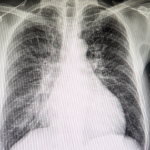
Berdi
urinary Track Health
Are you familiar with the invisible villains lurking around us, waiting to trigger an asthma attack? Picture this: you’re going about your day when suddenly, you’re struggling to breathe. Understanding asthma triggers is the first step towards reclaiming control over your respiratory health.
Let’s delve into the world of asthma triggers, arm ourselves with knowledge, and learn how to evade their grasp.
Asthma, a chronic respiratory condition, affects millions worldwide. According to the Global Initiative for Asthma (GINA), it is characterised by recurrent episodes of wheezing, breathlessness, chest tightness, and coughing due to airflow obstruction and inflammation of the airways. These airways, or tubes, carry air to your lungs. In someone with asthma, the airways become sensitive and react to certain triggers by narrowing and inflaming. This narrowing makes breathing difficult, leading to the characteristic symptoms of asthma. Asthma can be debilitating, but understanding its triggers empowers individuals to manage their condition effectively.
The World Health Organization (WHO) estimates that 262 million people globally have asthma. That’s a significant portion of the population potentially struggling to breathe easily. These statistics underscore the importance of understanding and mitigating asthma triggers to reduce its burden on individuals and healthcare systems globally. While there’s no cure for asthma, identifying and avoiding asthma triggers is a crucial step in managing the condition and improving your quality of life.
People with asthma usually have varying triggers. The most common asthma triggers are as follows.
Allergens, such as pollen, dust mites, pet dander, and mould spores, can induce asthma symptoms in susceptible individuals. These microscopic particles infiltrate the airways, triggering inflammation and constriction. Studies suggest a strong link between allergen exposure and asthma exacerbations.
Dust mites, pollen, pet dander, and mould are all common allergens that can trigger asthma symptoms. These tiny particles irritate the airways, causing inflammation and narrowing.

Exposure to air pollutants like particulate matter (PM), nitrogen dioxide (NO2), and ozone (O3) can exacerbate asthma symptoms and increase the risk of developing the condition. Research indicates that long-term exposure to air pollution is associated with decreased lung function and increased asthma prevalence.
Both active smoking and exposure to secondhand smoke are significant asthma triggers. The harmful chemicals in tobacco smoke irritate the airways, leading to inflammation and increased asthma severity. The American Lung Association demonstrated the detrimental effects of smoking on asthma control and lung function.
Viral respiratory infections, such as the common cold and influenza, can exacerbate asthma symptoms and trigger acute exacerbations. Respiratory viruses cause airway inflammation and hyperresponsiveness, worsening respiratory function in individuals with asthma.

While exercise is essential for overall health, it can provoke asthma symptoms in some individuals, particularly during vigorous or prolonged physical activity. Exercise, especially in cold or dry air, can trigger asthma symptoms in some people. This phenomenon, known as exercise-induced bronchoconstriction (EIB), is common among asthmatics and requires proper management strategies.
According to the Allergy and Asthma Network, exposure to cold, dry air can trigger asthma symptoms, especially in individuals with sensitive airways. Cold air inhalation leads to bronchial constriction and airway inflammation, precipitating asthma attacks. Properly warming and humidifying the inhaled air can help mitigate these effects.
Emotional stress and strong emotions can act as asthma triggers, exacerbating symptoms in susceptible individuals. Stress-induced physiological responses, such as increased heart rate and shallow breathing, can provoke bronchoconstriction and worsen asthma control.
Certain workplace environments expose individuals to asthma-inducing substances, known as occupational asthma. Occupational triggers include chemicals, dust, fumes, and biological agents encountered in various industries. Occupational asthma accounts for a significant proportion of adult asthma cases and requires preventive measures.
Strong odours, perfumes, cleaning agents, and chemical irritants can trigger asthma symptoms in sensitive individuals. Inhalation of these substances can irritate the airways, leading to bronchoconstriction and respiratory distress. Avoiding exposure to such irritants is crucial for asthma management.
Certain medications, such as non-steroidal anti-inflammatory drugs (NSAIDs), beta-blockers, and aspirin, can trigger asthma symptoms or exacerbate existing asthma. Individuals with aspirin-exacerbated respiratory disease (AERD) are particularly susceptible to adverse reactions and should avoid these medications.

Hormonal fluctuations during the menstrual cycle can worsen asthma symptoms in some women. A 2005 study shows that preovulatory and perimenstrual phases are actual triggers of asthma exacerbation in some women.
While less common asthma triggers, certain food additives and sulfites can trigger asthma symptoms in some people.

Understanding asthma triggers empowers individuals to take proactive steps in managing their condition and reducing the risk of exacerbations. By identifying and avoiding common triggers such as allergens, air pollution, and respiratory infections, individuals can significantly improve their quality of life. Remember, knowledge is key to asthma control. Take charge of your respiratory health today.
Take control of your asthma with Route2Health’s Prospan, a natural ivy leaf product trusted by millions worldwide. Say goodbye to asthma triggers and embrace a life of breathing freely.
Allergens, like dust mites, pollen, and pet dander, are the most common asthma triggers.
Yes, stress can worsen asthma symptoms in some people and is one of the most common asthma triggers.
There is no cure for asthma, but there are effective treatments to manage symptoms and improve quality of life.
To avoid asthma triggers at home, you can take steps such as regularly cleaning to reduce dust and mould, using allergen-proof bedding, maintaining proper ventilation, avoiding tobacco smoke exposure, and keeping pets out of bedrooms.
Identifying and avoiding your triggers is the most important step. Medications and following your doctor’s asthma management plan are also crucial.







©2023 Route2Health®️
NTN: 2229383
AN ASSOCIATED COMPANY OF HIGHNOON LABORATORIES
STRN: 0301999937728

WhatsApp us
